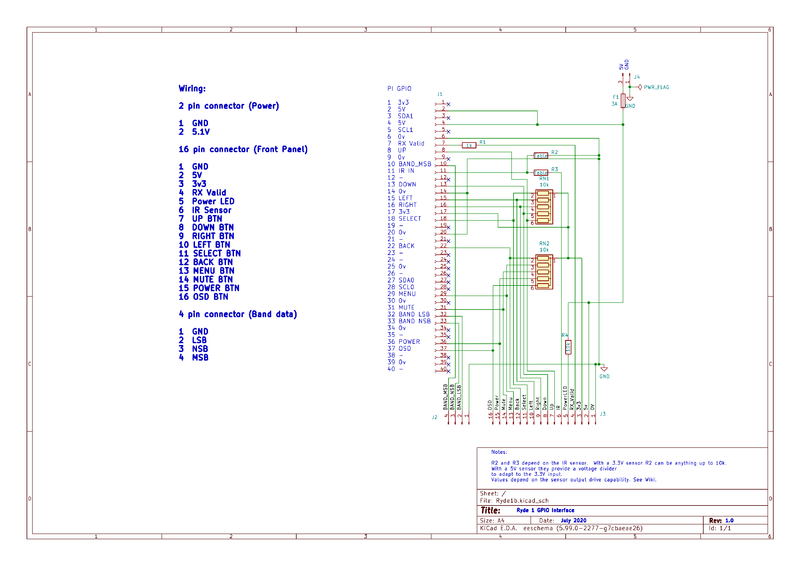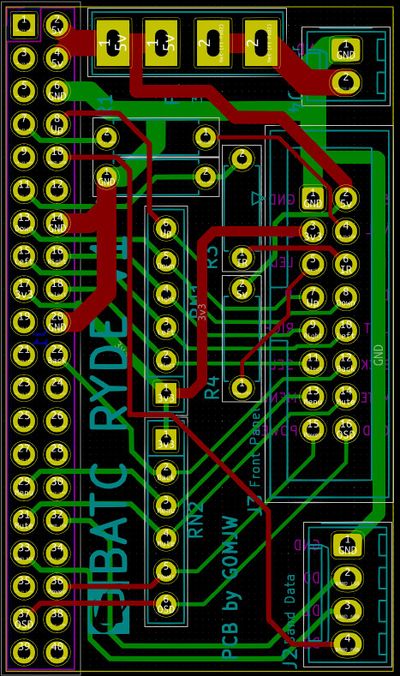Difference between revisions of "Ryde GPIO breakout"
| Line 42: | Line 42: | ||
16 way socket Farnell code 1106834 or 2310066 | 16 way socket Farnell code 1106834 or 2310066 | ||
| − | 40 way socket Farnell code | + | 40 way socket Farnell code 2308433 |
Fuse holder: | Fuse holder: | ||
Revision as of 10:36, 31 July 2020
To help constructors connect easily to the Ryde RPIO, BATC has produced a small daughter board - PCBs will be available in the BATC shop.
Construction notes
- Note the GPIO board requires 5v NOT 12v!
- The GPIO header is placed on the opposite side of the PCB to the rest of the components.
- Pay attention to the orientation of the resistor arrays - they are not the same.
- Build the top side first, start with the resistors, then the resistor arrays, then the 16 way, then the headers, finally fit the 40 way on the other side of the PCB.
- The fuse is a standard automotive mini-blade, 3A. Take care inserting it as it requires considerable force. You may need to open up the socket a little.
Bill of materials
A full bill of materials will follow but the schematic is shown below.
Farnell part numbers:
IR Sensor - TSOP2438 Farnell code 4913097 Run off 3.3V R1 4k7, omit R2.
SIP Resistor arrays 10k 4606X-101-103LF Farnell code 9356142
Resistors e.g. 1K, 4k7, 10K Multicomp MF12 or MF25 series.
10k Farnell code 9342419 1k Farnell code 9342400 4k7 Farnell code 9343253
Connectors:
2 way Molex kk254 6373 series Farnell code 1462926 4 way Molex kk254 6373 series Farnell code 1462920 16 way socket Farnell code 1106834 or 2310066
40 way socket Farnell code 2308433
Fuse holder:
MCCQ-122 1586595
40 way GPIO socket https://shop.pimoroni.com/products/2x20-pin-gpio-header-for-raspberry-pi-2-b-a?variant=1132812261


